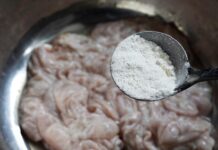Fever in infants and young children is a common occurrence, and parents often wonder if it is safe to bathe their little ones during this time. This article aims to address this concern and provide guidance on managing fever in children.
1 Can a Child with a Viral Fever Take a Bath?
According to medical experts, bathing a child with a viral fever can help them feel more comfortable and relaxed. Lowering the child’s body temperature through bathing can reduce irritability and fussiness. However, if the child is extremely weak, bathing may lead to a risk of catching a cold, so it is important to monitor their condition and make a decision accordingly.
 Is it safe for a child with a viral fever to bathe?
Is it safe for a child with a viral fever to bathe?
Here are some important considerations when bathing a child with a viral fever:
- Avoid using cold water as it can lower the child’s body temperature further and worsen the fever.
- Ensure the bathroom is draft-free to prevent the child from catching a chill.
- Give the child a warm drink before bathing.
- Dry the child thoroughly after the bath to prevent chills.
2 How to Bathe a Child with a Viral Fever
Follow these steps to bathe a child with a viral fever safely:
 How to bathe a child with a viral fever
How to bathe a child with a viral fever
If you are still concerned about bathing your child with a viral fever, you can opt to use warm towels to wipe their body instead.
3 Can a Child with a Viral Fever Shampoo Their Hair?
 Can a child with a viral fever shampoo their hair?
Can a child with a viral fever shampoo their hair?
Medical experts advise that it is safe to shampoo a child’s hair when they have a viral fever. Shampooing can aid in their recovery and alleviate feelings of heat and discomfort. However, when shampooing a child with a viral fever, keep the following in mind:
- Use warm water for shampooing, never cold water.
- Ensure the bathroom is draft-free during shampooing.
- Shampoo quickly and dry or blow-dry the child’s hair afterward.
4 What Should a Child with a Viral Fever Eat?
 What should a child with a viral fever eat?
What should a child with a viral fever eat?
It is important to provide a variety of nutritious foods to support the child’s recovery:
- Encourage the child to drink plenty of fluids to stay hydrated and help reduce body heat.
- Offer soft, easily digestible foods such as porridge or soup.
- Include vitamin-rich foods in their daily meals to boost their immune system and speed up recovery.
This article has provided guidance on managing a child’s viral fever, including bathing and feeding practices. We hope it has equipped you with the knowledge to confidently care for your little one during this time.
Sources: Medlatec.vn, Thu Cuc Hospital






























